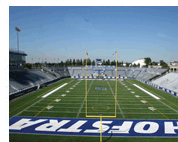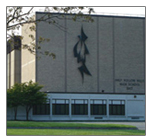Remembering Fun-Loving Chappie
Aug 01, 2020Posted by james
Though none of us recall one of the saddest days in American sports, all of us should pause for a moment on August 16 to reflect on the tragedy that occurred in Manhattan 100 years ago.
~ James C. Metzger
Chappie was known as a happy-go-lucky guy, always laughing, smiling and singing. Everyone who met him loved him. He wasn’t just a Major League Baseball player. He was a star.
All Chappie wanted was to bring a pennant and a World Series championship to Cleveland. If this could be accomplished now, Chappie hinted that this might be his final season as a ballplayer. At the age of 29, he planned to follow a business career with his new father-in-law’s company.
On August 16, 1920, the Cleveland Indians were in New York for a tense three-game series with the Yankees as the teams battled for first place. During the subway ride aboard the elevated train to the Polo Grounds for the first game, Chappie tried to ease the pressure on his teammates. The team had run into bad luck, their shortstop said, because the team had stopped singing as a group. Right there, in the subway car, Chappie began to sing “Dear Old Pal o’ Mine” in his sweet tenor voice.
Later that day, Ray Chapman, one of Cleveland’s baseball icons, was sprawled on the ground near home plate. He had been struck in the head with a pitch from Yankees pitcher Carl Mays. Chappie died in a hospital the next morning.
Many who arrived at the stadium for the scheduled second game of the series had heard about the events of the previous day but they did not yet know that Chappie had died. At the Polo Grounds gates, league officials and detectives told the fans that the game had been postponed. Hundreds of fans walked to the undertaker’s establishment, James F. McGowan at 153rd Street and Amsterdam Avenue, where the player’s body had been transported from the hospital.
That evening, Chappie’s remains were brought to Grand Central Terminal by his widow and team officials. The casket was enclosed in a white pine box. On top was a bouquet of flowers. As the casket was carried through the terminal, hundreds of New Yorkers stopped during their evening rush home. Men removed their hats. Women wept.
News about the death of a major league baseball player from a pitched ball spread across the country. In a Cleveland newspaper, the words of a writer explained the sorrow: “Lawyers forgot to talk of cases, ministers found it hard to concentrate on their work, politicians neglected their interests for the time being, workmen stood at their tools, and all thought of Chapman and his loss.”
Across the city, flags hung at half-mast. At the corner of East Sixth Street and Superior Avenue, where the paperboy known as “Izzy” featured the baseball scores for his customers, game results did not appear that day on the boy’s poster. He was devastated.
Hundreds of people gathered at Cleveland’s Union Station to await the arrival of the Lake Shore Limited from New York. The crowd watched quietly as the widow and her father stepped from the train along with the casket. Following a church funeral, Ray Chapman was laid to rest on August 20 at Lake View Cemetery in Cleveland.
On September 3, when Cleveland again played at its home stadium, a lone bugler walked to the shortstop area of the infield at League Park. Fans removed their hats. Members of the Cleveland and visiting Detroit clubs stood at attention on the field. A sailor, a member of the Cleveland naval reserves that was Chapman’s old unit, lifted the bugle to his lips and played taps.
Ray Chapman is the only Major League Baseball player to die from an injury received during a game. The official boxscore from the August 16, 1920 game at the Polo Grounds simply recorded the incident as “Hit by pitched ball—By Mays (Chapman.)”
_______
The epilogue to this story will be featured in the post to appear later this month.









